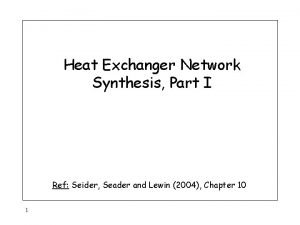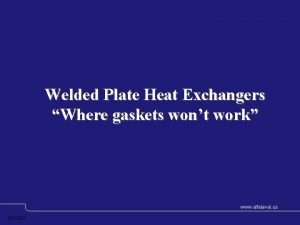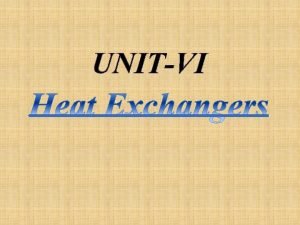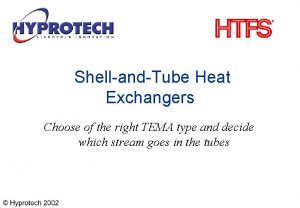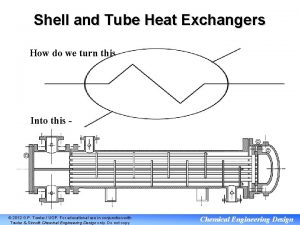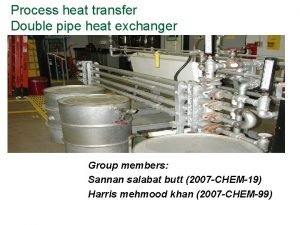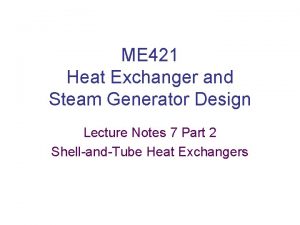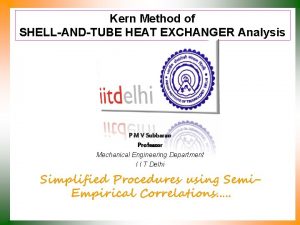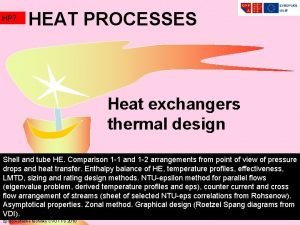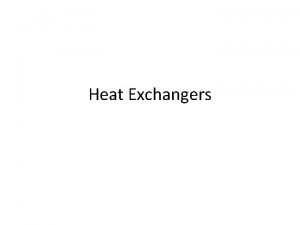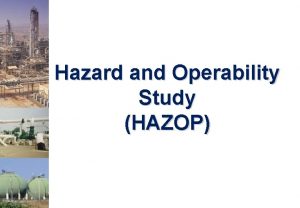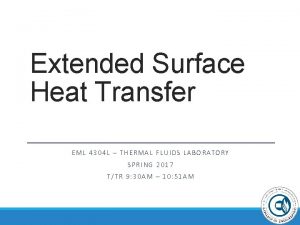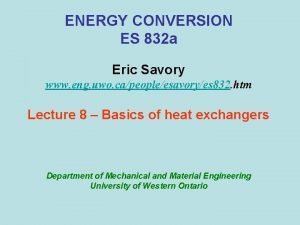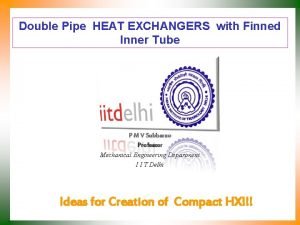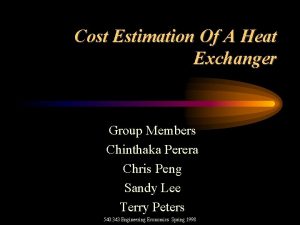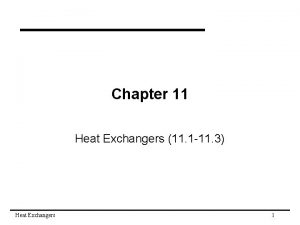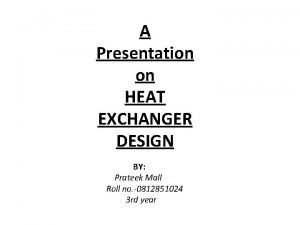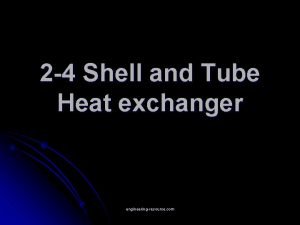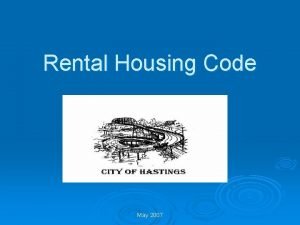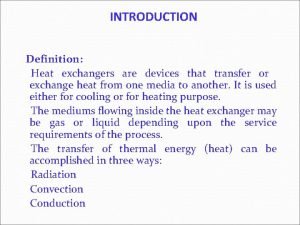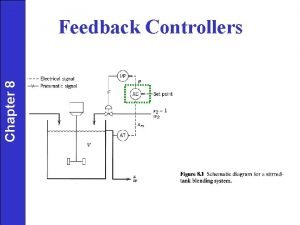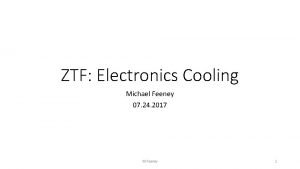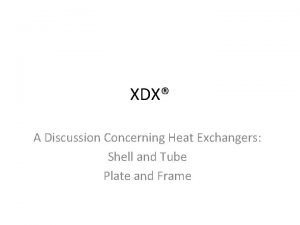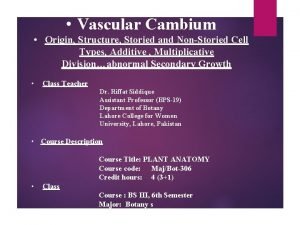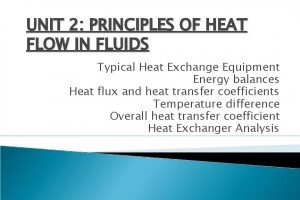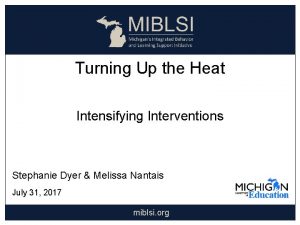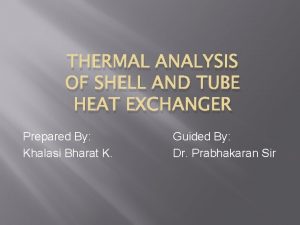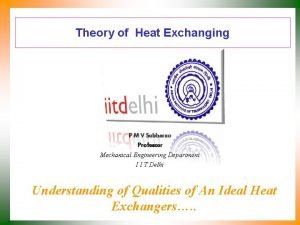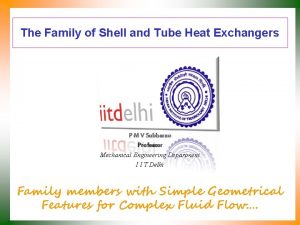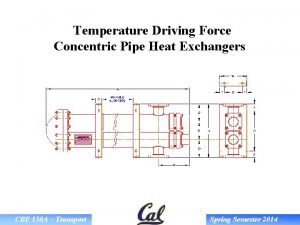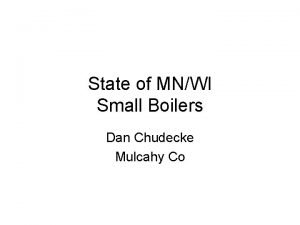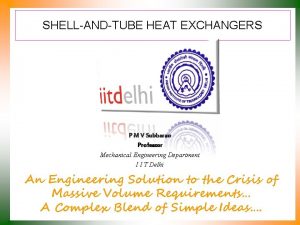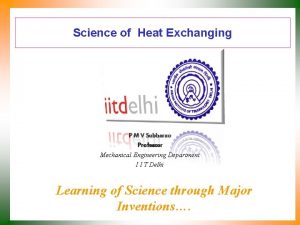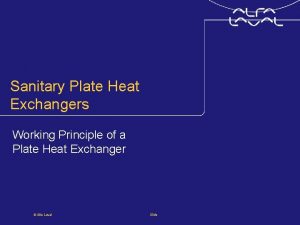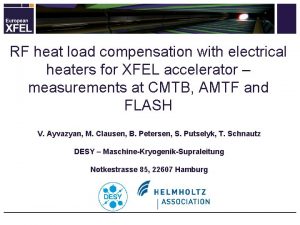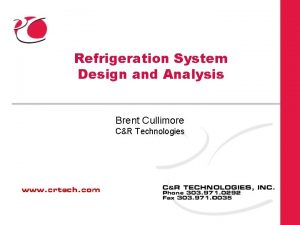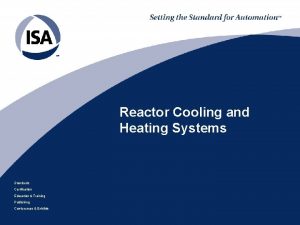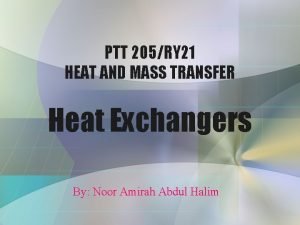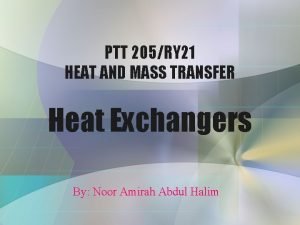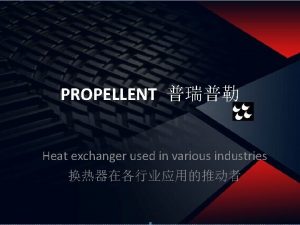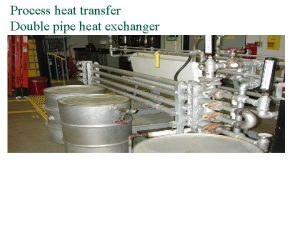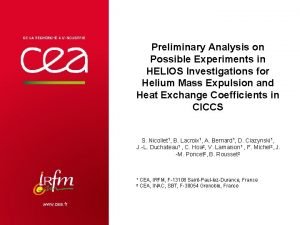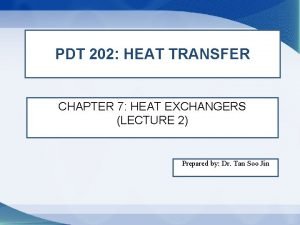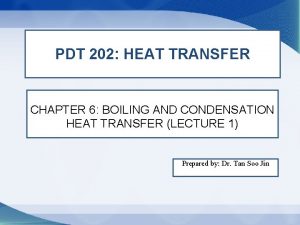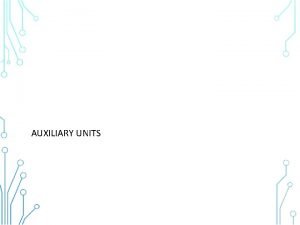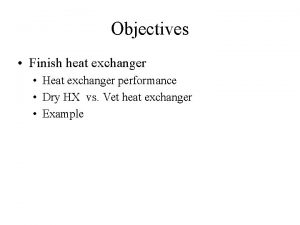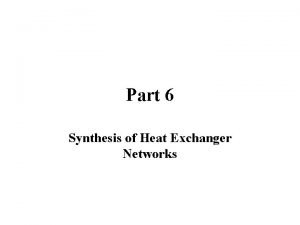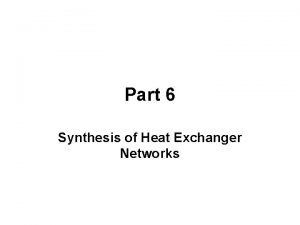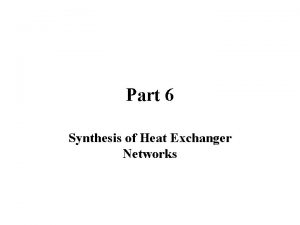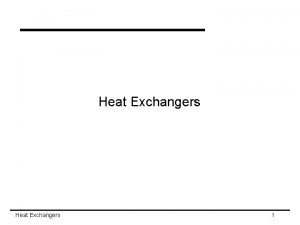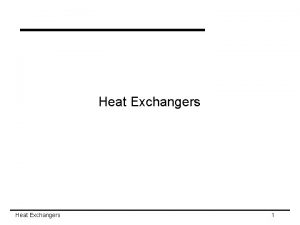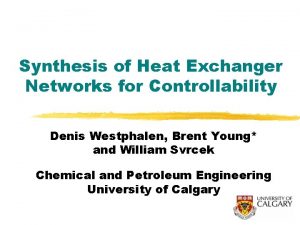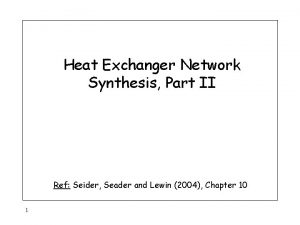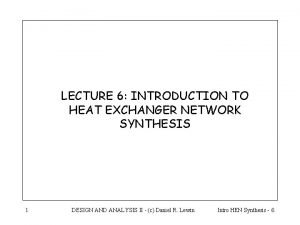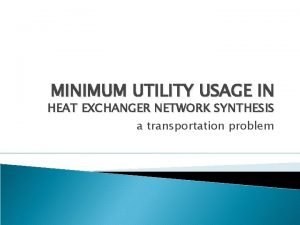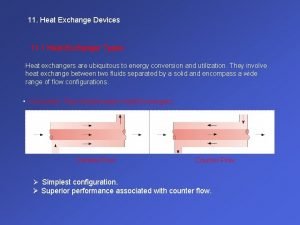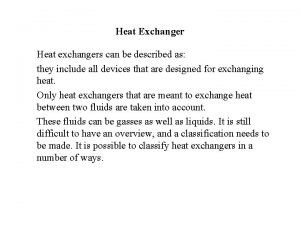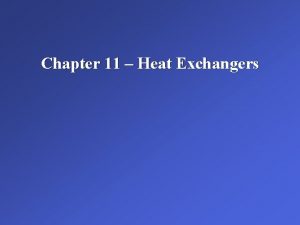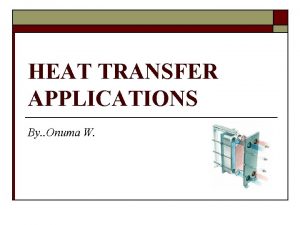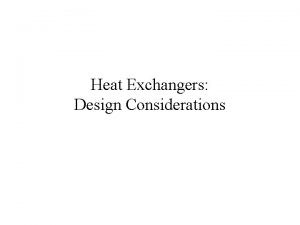Part 6 Synthesis of Heat Exchanger Networks 6






















































- Slides: 54

Part 6 Synthesis of Heat Exchanger Networks

6. 1 Sequential Synthesis Minimum Utility Cost

Example 1 Fcp (MW/C) Tin (C) Tout (C) H 1 1 400 120 H 2 2 340 120 C 1 1. 5 160 400 C 2 1. 3 100 250 Steam: 500 C Cooling water: 20 – 30 C Minimum recovery approach temperature (HRAT): 20 C



Heat Balances around Temperature Intervals

Transshipment Model

Remarks • LP for minimum utility consumption leads to the same results as the Problem Table in Pinch method. • The transshipment model can be generalized to consider multiple utilities to minimize total utility cost. • This model can be expanded so as to handle constraints on matches. • This model can also be expanded so as to predict the matches for minimizing the number of units. • We can embed the equations of the transshipment model within an optimization model for synthesizing a process system where the flows of the process streams are unknown.

Index Sets


Condensed Transshipment Model

Example 2 H 1 FCp (MW/K) 2. 5 Tin (K) 400 Tout (K) 320 H 2 3. 8 370 320 C 1 2. 0 300 420 C 2 2. 0 300 370 HP Steam: 500 K, $80/k. W-yr LP Steam: 380 K, $50/k. W-yr Cooling Water: 300 K, $20/k. W-yr HRAT: 10 K



Sequential Synthesis Minimum Utility Cost with Constrained Matches


Basic Ideas


Heat Exchange Options • Hot stream i and cold stream j are present in interval k (see figure in the previous page). • Cold stream j is present in interval k, but hot stream i is only present at higher temperature interval (see figure in the next page).


Index Sets


Expanded Transshipment Model

Match Constraints

Example 1 Fcp (MW/C) Tin (C) Tout (C) H 1 1 400 120 H 2 2 340 120 C 1 1. 5 160 400 C 2 1. 3 100 250 Steam: 500 C, $80/k. W-yr Cooling water: 20 – 30 C, $20/k. W-yr Minimum recovery approach temperature (HRAT): 20 C The match between H 1 and C 1 is forbidden.

Condensed Transshipment Model The annual utility cost: $9, 300, 000.

Expanded Transshipment Model Annual Utility Cost: $15, 300, 000 Heating Utility Load: 120 MW Cooling Utility Load: 285 MW

Sequential Synthesis Prediction of matches for minimizing the unit number

Objective Function

Heat Balances The constraints in the expanded transshipment model can be modified for the present model: 1. The heat contents of the utility streams are given. 2. The common index i can be used for hot process and utility streams; The common index j can be used for cold process and utility streams.

Heat Balances

Logical Constraints

Solution

Example 1 Fcp (MW/C) Tin (C) Tout (C) H 1 1 400 120 H 2 2 340 120 C 1 1. 5 160 400 C 2 1. 3 100 250 Steam: 500 C Cooling water: 20 – 30 C Minimum recovery approach temperature (HRAT): 20 C

Condensed Transshipment Model


MILP (i)

MILP (ii)

Solution


Alternative Solution

Solve MILP without Partition

Only 5 units! One less than the previous two!

Sequential Synthesis Automatic Generation of Network Structures

Basic Ideas • Each exchanger in the superstructure corresponds to a match predicted by the MILP model (with or without pinch partition). Each exchanger will also have as heat load the one predicted by MILP. • The superstructure will contain those stream interconnections among the units that can potentially define all configurations. The stream interconnections will be treated as unknowns that must be determined.

Superstructure for one hot stream and two cold streams

Embedded Alternative Configurations • • H 1 -C 1 and H 1 -C 2 in series H 1 -C 2 and H 1 -C 1 in series H 1 -C 1 and H 1 -C 2 in parallel with bypass to H 1 -C 2 • H 1 -C 1 and H 1 -C 2 in parallel with bypass to H 1 -C 1


Parameters and Unknowns

Objective Function

Equality Constraints

Inequality Constraints

Example 3 Stream Tin (K) Tout (K) Fcp (k. W/K) h (k. W/m^2 K ) Cost ($/k. W-yr) H 1 440 350 22 2. 0 - C 1 349 430 20 2. 0 - C 2 320 368 7. 5 0. 67 - S 1 500 - 1. 0 120 W 1 300 320 - 1. 0 20 Minimum temperature approach = 1 K Exchanger cost = 6600+670(Area)^0. 83

Solution
 Heat exchanger network synthesis
Heat exchanger network synthesis Virtual circuit network and datagram network
Virtual circuit network and datagram network Basestore iptv
Basestore iptv Compabloc plate heat exchanger
Compabloc plate heat exchanger Parallel heat exchanger
Parallel heat exchanger Twisted tube heat exchanger
Twisted tube heat exchanger We
We Pipe in pipe heat exchanger
Pipe in pipe heat exchanger Bell delaware method
Bell delaware method Sieder tate equation
Sieder tate equation Counter flow heat exchanger
Counter flow heat exchanger What is the general range of ntu in heat exchanger design
What is the general range of ntu in heat exchanger design Hazop analysis for separator
Hazop analysis for separator Heat exchanger test ring drawing
Heat exchanger test ring drawing Extended surface heat exchanger
Extended surface heat exchanger Lmtd heat exchanger formula
Lmtd heat exchanger formula Pipe
Pipe Discharge pipe thermistor
Discharge pipe thermistor Shell and tube heat exchanger cost estimation
Shell and tube heat exchanger cost estimation In shell and tube surface condenser
In shell and tube surface condenser Regenerative type heat exchanger
Regenerative type heat exchanger 2-4 shell and tube heat exchanger design
2-4 shell and tube heat exchanger design Wood boiler heat exchanger
Wood boiler heat exchanger Cracked heat exchanger
Cracked heat exchanger Heat definition
Heat definition The controllers chapter 8
The controllers chapter 8 Parker heat exchanger
Parker heat exchanger Plate type exchanger
Plate type exchanger Water exchanger
Water exchanger Structure of vascular cambium
Structure of vascular cambium Shell and tube type condenser
Shell and tube type condenser Rusty heat exchanger
Rusty heat exchanger Standard xchange heat exchanger
Standard xchange heat exchanger A shell and tube heat exchanger
A shell and tube heat exchanger Simple heat exchanger
Simple heat exchanger Shell and tube type
Shell and tube type Concentric double pipe heat exchanger
Concentric double pipe heat exchanger Viessmann heat exchanger
Viessmann heat exchanger Tubesheet heat exchanger
Tubesheet heat exchanger Cross counter flow heat exchanger
Cross counter flow heat exchanger Simple heat exchanger
Simple heat exchanger Sanitary plate heat exchanger
Sanitary plate heat exchanger Propane heat exchanger
Propane heat exchanger Rheem solaraide price
Rheem solaraide price Refrigeration system design
Refrigeration system design Reactor heat exchanger
Reactor heat exchanger Rusty heat exchanger
Rusty heat exchanger Single pass heat exchanger
Single pass heat exchanger A double pipe parallel flow heat exchanger
A double pipe parallel flow heat exchanger Shell and tube heat exchanger in food industry
Shell and tube heat exchanger in food industry A double pipe parallel flow heat exchanger
A double pipe parallel flow heat exchanger Counter flow heat exchanger
Counter flow heat exchanger A double pipe parallel flow heat exchanger
A double pipe parallel flow heat exchanger Pool heat exchanger for boiler
Pool heat exchanger for boiler Subsoil heat exchanger
Subsoil heat exchanger
